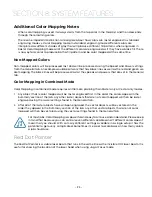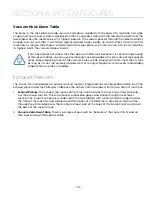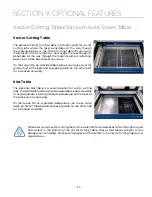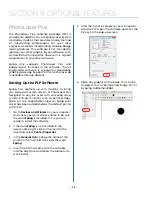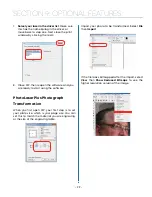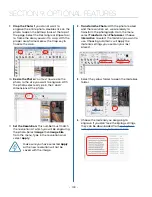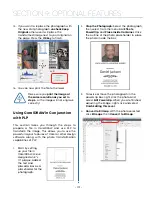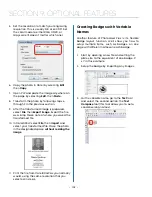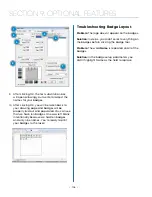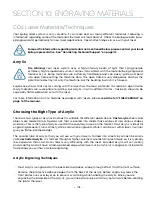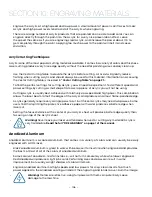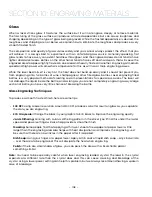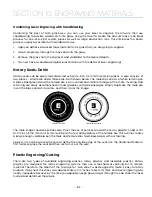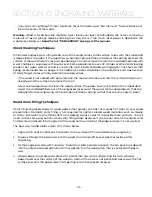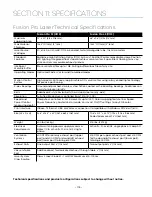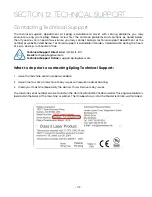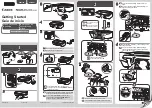
SECTION 10: ENGRAVING MATERIALS
CO2 Laser Materials/Techniques
Your Epilog Laser system is very versatile. It can mark and cut many different materials. Following is
information regarding some of the materials the laser will mark and cut. Check the Epilog website (www.
epiloglaser.com) periodically for new laser applications, tips and techniques to use with your laser.
For specific information regarding materials not mentioned below, please contact your local
Epilog representative. See “Contacting Technical Support” on page 119.
Acrylic
Fire Warning:
Your laser system uses a high-intensity beam of light that can generate
extremely high temperatures when it comes into contact with the material being engraved,
marked or cut. Some materials are extremely flammable and can easily ignite and burst
into open flame setting the machine afire. This open flame is very dangerous and has the
potential to destroy not only the machine, but the building in which it is housed.
Experience shows that vector cutting with the laser has the most potential to create an open flame.
Many materials are susceptible to igniting, but acrylic -in all its different forms - has been shown to be
especially flammable when cut with the laser.
For more information on fire hazards associated with lasers, please
read the full “FIRE WARNING” on
page 1 of the manual.
Choosing the Right Type of Acrylic
There are two types of acrylics and each is suitable for different applications.
Cast acrylic
sheets and
objects are made from a liquid acrylic that is poured into molds that can be set into various shapes
and sizes. This is the type of acrylic used for the awards you see on the market. Cast acrylic is ideal for
engraving because it turns a frosty white color when engraved. While it can be cut with a laser, it will not
give you flame-polished edges.
The second type of acrylic that you will use with your laser is formed into sheets by a machine and is
called
extruded acrylic
. It is formed through a higher-volume manufacturing technique, so it is typically
less expensive than cast, and it reacts very differently with the laser. Extruded acrylic will cut cleanly
and smoothly and will have a flame-polished edge when laser cut. But when it is engraved, instead of a
frosted look you will have a clear engraving.
Acrylic Engraving Techniques
• Most acrylic is engraved on the backside to produce a look-through effect from the front surface.
• Remove the protective adhesive paper from the back of the acrylic before engraving. Leave the
front protective cover layer on to prevent scratching while handling the acrylic. Since you are
engraving the backside of the acrylic, you will need to reverse or mirror your artwork before sending
the job to the laser.
- 105 -



